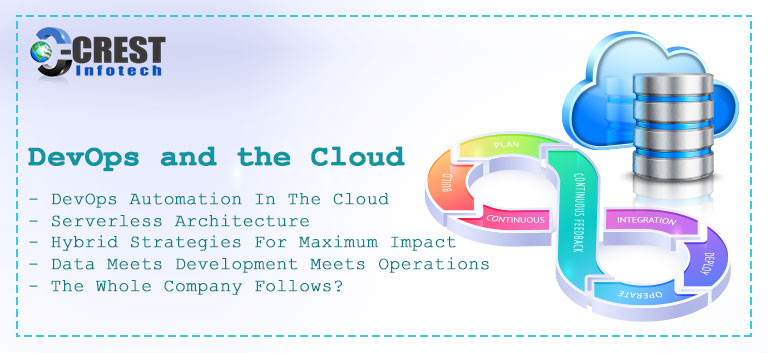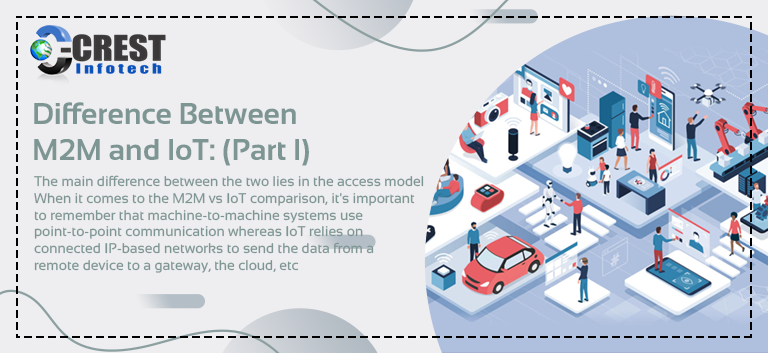As a way of enhancing their tech teams, more and more enterprises are continuing to shift to DevOps and the cloud. Although it used to be that growth and activities were seen as distinct, that view has changed now. Linking the two contributes to improved contact, quicker growth times, and the opportunity to remain on top of things. With continuous integration, distribution, testing, and tracking as core concepts, keeping up with the demands of customers is simpler than ever. The pace that can be implemented by a DevOps model, however, is often reduced by access to the required technologies. It can become costly easily, too. Fortunately, there has been a cloud-based computing movement, and this is expected to grow in 2020.
Automation of DevOps In The Cloud
The way it frees your team from routine activities is one of the main advantages of agile methodology and DevOps. They should now concentrate on more imaginative problem solving. As businesses start to take advantage of the cloud for automation, you can expect to see this gain expand.Instead of depending on your IT team to process and test data manually, you can use cloud-based services to do it. The way it frees your team from routine activities is one of the main advantages of agile methodology and DevOps. They should now concentrate on more imaginative problem solving. As businesses start to take advantage of the cloud for automation, you can expect to see this gain expand.Instead of depending on your IT team to process and test data manually, you can use cloud-based services to do it. This also makes it simpler, no matter where they are, for the team to access the data! A Cloud PBX framework is all that you need. Fixed positions are becoming a thing of the past with a Cloud PBX system. Automation also avoids the slowing down of the process when you reach certain parts of the cycle, especially testing and monitoring.
Architecture Serverless
The availability of such technologies also restricts IT teams. When scaling up an initial project, this is especially noticeable. For technology which may not be needed in the long run, scaling requires a significant investment up front. It may also lead to instances where upgrades or improvements of software are delayed by needing to wait for such hardware. You need to provide the team with the most up-to-date technologies available to get the most out of the DevOps model. This is where it comes to the cloud.
You may make use of the serverless architecture instead of having to invest in physical equipment and solutions. This means you don’t need physical facilities to be purchased and maintained. Instead, the cloud can be used to With an estimated surge of about $9 billion by 2023, the services on offer will expand as cloud computing expands. This enables the DevOps team to migrate through the cloud more of their work.
This contributes to the opportunity to scale the services per project, rather than having to scale them in advance. You can scale back until you’re further into the manufacturing cycle if you need a greater amount of capital for the initial development stage. You just decrease your consumption, rather than ending up with unused servers. It’s much easier to adapt, and much cheaper.
Hybrid Maximal Effect Methods
There are, of course, some things outside of the cloud that are easier to do. That is why we should expect a rise in hybrid strategies to be seen. In certain places, Edge computing also has significant benefits. For example, instead of relying on an external service, it allows you to have more control over your own protection. It also has a lower latency since it doesn’t call a distant server over an internet connection. For many firms, this difference in latency would have little effect. Nevertheless, there are several places where it can assess what elements of cloud development work, and which do not.
Of course, many cloud storage services, even without edge computing, do not cover everything you might need. This adds to the use of a multi-cloud approach, with multiple items depending on different providers.
This might lead to two paths that could be feasible. Cloud services may specialise and DevOps teams work with truly multi/hybrid strategies, potentially requiring additional technology to be used to ensure that they are properly connected. Or, instead, cloud providers may extend to try and cover as much as they can.
Data Meets Production Meets Operations
This idea, usually called ‘DataOps’, you might already be familiar with. Just as the amount of DevOps running in the cloud is rising, so is the data industry. Similar instruments, including the ability to automate data processing on a global scale, are used by many data teams. With DataOps becoming more popular, we should expect to see a further convergence, adopting the ideas behind DevOps in its own processing. This will allow the data industry to have better access to things like shared tools, version control and centralised tracking no matter where they are located.
It will also provide positive reviews on DevOps, allowing teams in that field the opportunity to strengthen and feed back into development processes through their own data processing. We should expect cloud providers to begin developing tools specifically for DevOps and DataOps, as these connections between data, growth, and operations thrive.
You can also Hire Dedicated Developer and Hire Dedicated Designers. Contact Crest Infotech to know more about Dedicated Development and Designing services in Details.



